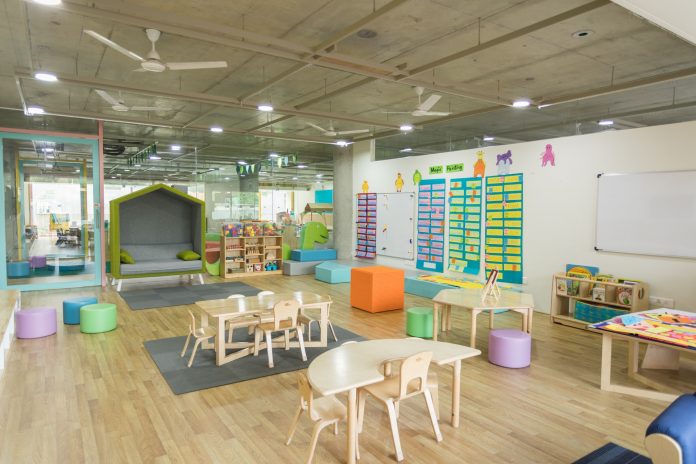If you are a caring, reliable, and hard-working individual and love spending time with kids, a career in child care might just be perfect for you. Setting up a daycare center is an excellent idea if you want a home-based business and have young children of your own. Here are some tips on how to set up a daycare business.
A Safe House
When setting up a daycare facility in your home, the most important thing is to ensure that you adhere to health and safety guidelines. Ideally, your home should be fitted with carbon monoxide alarms, smoke detectors, smoke alarms, and you should determine your route of escape, should the worst happen. You may want to ask a local fire department member to check over your property for potential hazards. They may recommend you buy fire extinguishers and fire blankets.
Purchase safety locks for windows, stair gates, childproof locks for cupboards and drawers, electrical socket covers, and any other accessories that will minimize injury to children. Attend a class on First Aid for Children and keep a well-stocked first aid kit.
Ensure you adhere to your local government’s rules and regulations and familiarize yourself with licensing guidelines provided by Child Care Aware of America. You want your daycare business to be a safe, nurturing, and educational sanctuary filled with happy, healthy, and confident children.
A Furnished House
Although not essential, it is useful to dedicate a room in your house solely to your daycare business. This means that you can separate your business from your home life and don’t have to fear kids damaging your possessions, and you won’t have to tidy everything away at the end of the working day.
Furnish your daycare room with lots of brightly colored furniture such as flexible classroom seating, which can be in the form of soft bean bags or wobble chairs for wriggly tots. Padded mats and soft rugs are ideal for story time when your children need to sit in a huddle around you on the floor. Wipeable plastic tables are a must for drawing and painting sessions, as is durable flooring such as laminate, wood, or vinyl.
Buy plenty of storage cabinets or chests of drawers to store all of your supplies and keep them away from prying eyes and fingers. Keep clutter to a minimum by keeping everything off the floor and in a clearly labelled area. Toys could be kept in storage baskets while pens, crayons, paints and pencils should be put in a lockable drawer.
Create a book nook in a corner of the room. Scatter some beans bags or floor cushions around and surround with book shelves so children are encouraged to have some quiet reading time.
Paint your walls with soothing colors to instill calmness in the children and decorate with lots of fun and educational pictures.
An Equipped House
Fill your daycare room with plenty of exciting books for children of all ages, paints, pencils, paper, and craft supplies. Younger children will appreciate teddy bears and soft toys to cuddle and educational toys that will hone their motor and cognitive skills.
A TV and DVD player might be useful on rainy days when you need to calm the kids down. Something to play music on should be available too because children love to dance and sing. Audiobooks or relaxing music could be played at nap time.
If you have very young children or babies, you will need to invest in equipment such as strollers, car seats, high chairs, and playpens.
Do not worry if you don’t have the biggest house or the best toys — all children really need is a happy, nurturing environment where they can grow and develop.
A Popular House
Once you have set up your home and bought all necessary equipment, you are ready to enroll some children. Decide on a name for your business and start advertising. Post adverts in the local paper or create your own website and social media pages. Fill your website with great photos of your facilities, yourself and anything else you think might appeal to families. Write a small blog about yourself, detailing your aims and values and what you can offer to a child in your care. Explain your experience, qualifications and why you have chosen to be a childminder. Once you have an established business you could ask for feedback from your clients and ask them to post reviews on your pages.
Look for local baby and toddler groups and leave some flyers with them. Get in contact with other child carers in your neighborhood to build up a support network.
A Fun House
Plan how you will run your daycare. Will you employ staff? If so, you will probably have to run official background checks on them to make sure they are qualified to work with vulnerable groups.
What hours will you work in a day? Will you be open during school holidays and what will you charge for your services?
Will you offer hot meals or just snacks and cold lunches? If you plan on feeding children home-cooked meals you will have to ensure that your food safety and hygiene skills are up to scratch and that you are fully aware of how to store food properly. Take into consideration different dietary needs of the children. Some kids may be severely allergic to shellfish or nuts and so you may have to avoid having these foods on the premises completely.
How will you structure your day? You may want to have a structured day involving an activity in the morning, snack time, free play, lunch, nap time, an activity and story time. If you have a vehicle with sufficient space you could take the children to parks, soft plays or other amusement venues.
Many parents like to see what their children have been doing so it’s nice to keep a personal journal for each child. You can fill the journal with personal details for the child such as emergency contact details, dietary requirements, medical requirements. Add photographs, examples of their work such as drawings and worksheets. You can write a daily update on the child’s physical, mental and emotional development.
Find a Home-Based Business to Start-Up >>> Hundreds of Business Listings.
















































